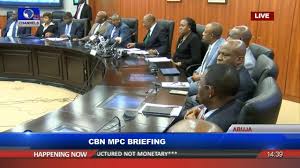Members of the Central Bank of Nigeria’s Monetary Policy Committee (MPC) ended their first two-day bi-monthly meeting in Abuja on Tuesday, the first for the year, the high-point of which was a unanimous vote to retain the current monetary stance.
Specifically, the meeting opted to retain the benchmark Monetary Policy Rate (MPR) at 14%; Cash Reserve Ratio, 22.5%; and Liquidity Ratio, 30%; while leaving the Asymmetric Window at +200 and -500 basis points around the MPR, bearing in mind “the importance of price stability, and… the limitations of monetary policy in influencing output and employment under conditions of stagflation.”
Importantly, the meeting restated the earlier call for the “the Federal Government to urgently assess the extent of its indebtedness to domestic economic agents and develop a framework for securitizing the debts in order to settle its outstanding domestic contractual obligations which cuts across all sectors of the economy.”
The most worrisome of these contractual obligations is believed to be the over N1.7 trillion owed to government contractors that continues to threaten attempts to stimulate growth in the economy. It is known that most of these funds were sourced from and continues to reflect in the huge toxic loan books of Nigerian banks thereby affecting the capital base of the banks and indeed, financial system stability.
All 10 MPC members, according to a communiqué at the end of the meeting, read by Godwin Emefiele, its chairman and Governor of the CBN further noted that the accumulated debts continue to slow “business activities of economic agents; most of who are indebted to the banking system, thus compromising the integrity of the financial system.”
Amidst such factors outside its control, members called on the CBN to fashion more robust fiscal and other sector initiatives and intervention to resolve the nation’s economic growth challenges, while ensuring “greater surveillance and deployment of early warning systems in managing the banking system.”
The meeting also reiterated “the limitations of monetary policy in reversing the current stagflationary condition in the economy, which it traced to supply and demand shocks.”
They also want a robust and more “keenly coordinated macroeconomic policy framework that would restart output growth, stimulate aggregate demand and rein in inflation expectations.”
Trending Today
Menu







